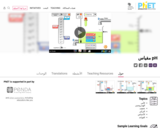
Learn about a variety of more "unusual species" treated at the Wildlife Center. The Center typically admits more than 150 different species each year -- while most of these animals are often the birds, mammals, and reptiles whose homes are in and around our own backyards and neighborhoods, Center staff are always prepared for any animal that might come through the door, even if we only see that species once every year or so! When the Center admits an unusual or uncommon species of wildlife, the staff relies on their extensive knowledge of natural history, as well as creativity and resourcefulness. Some unusual species treated at the Center are rarely admitted due to their secretive lifestyle; some are uncommon admissions because, as a species, they are in trouble.
- Subject:
- Career Connections
- Health and Medical Sciences
- Living Systems and Processes
- Material Type:
- Lesson
- Visual Media
- Author:
- Trish Reed
- Date Added:
- 04/21/2020
